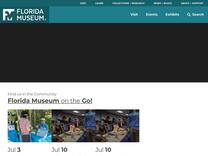Museum receives $455,000 grant to curate, digitize vertebrate fossils – Research News https://www.floridamuseum.ufl.edu/science/museum-receives-455000-grant-to-curate-digitize-vertebrate-fossils/
A new National Science Foundation grant allows scientists to prepare vertebrate paleontology specimens at the Florida Museum of Natural History, which houses the nation’s third-largest collection of cataloged vertebrate fossils. The $455,000 three-year project includes preparing 2-million-year-ol
the specimens is dependent on communication with Waldrop to correctly interpret hand-written

